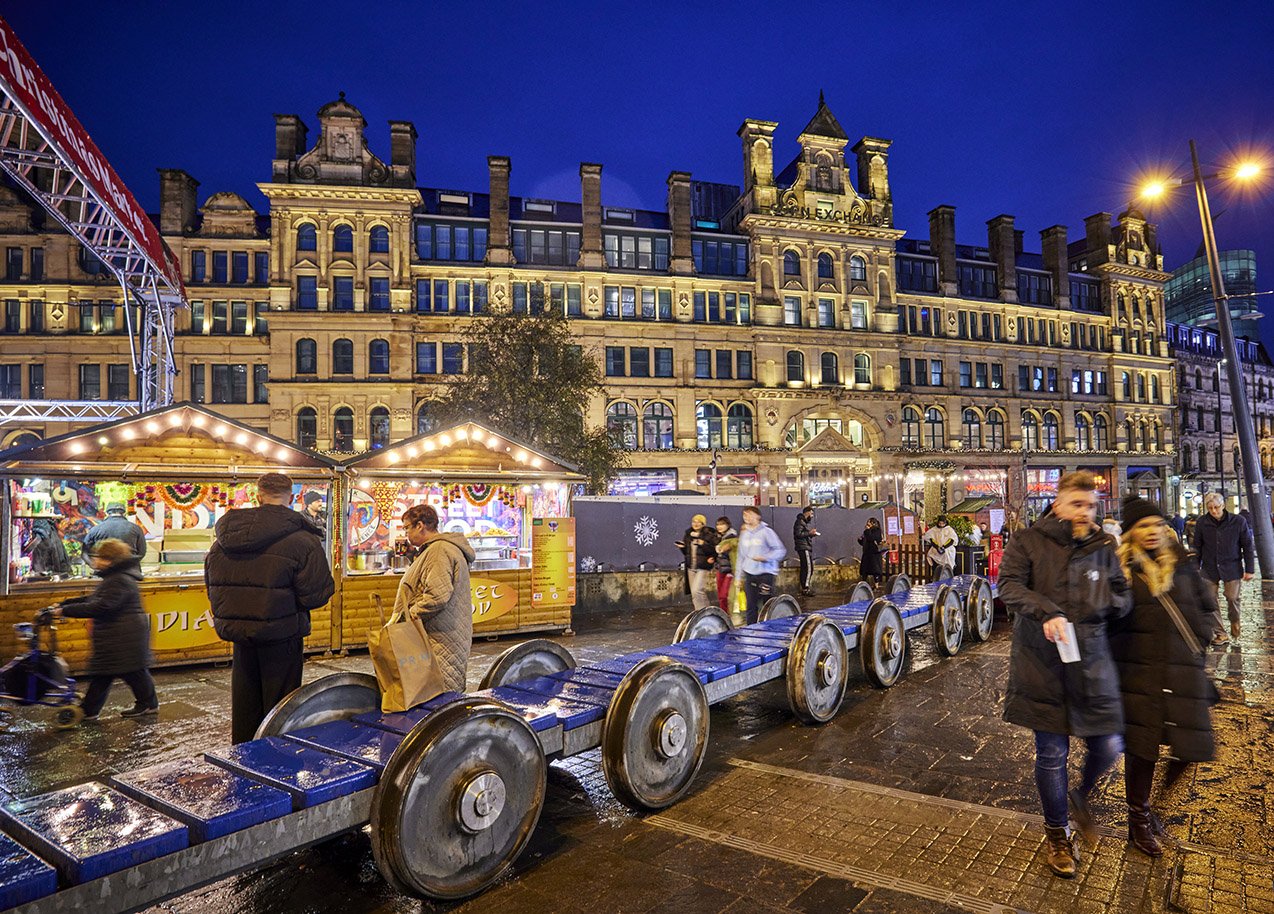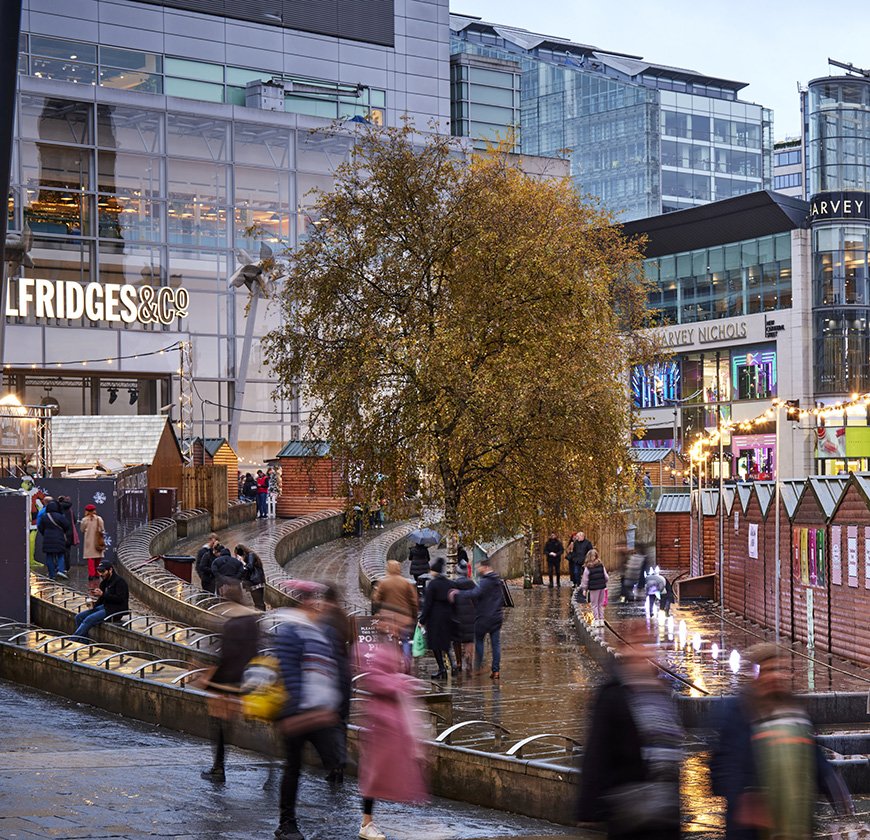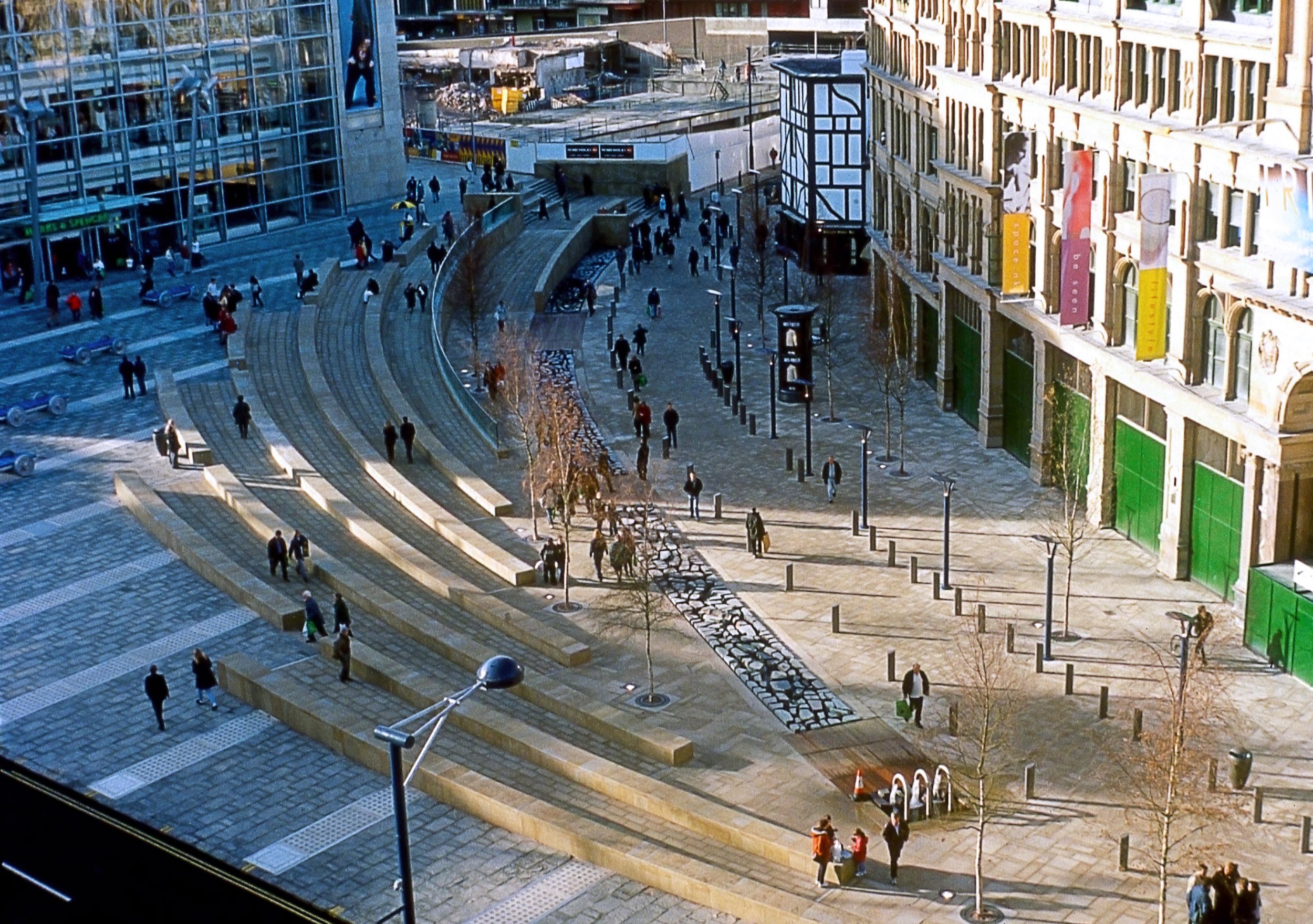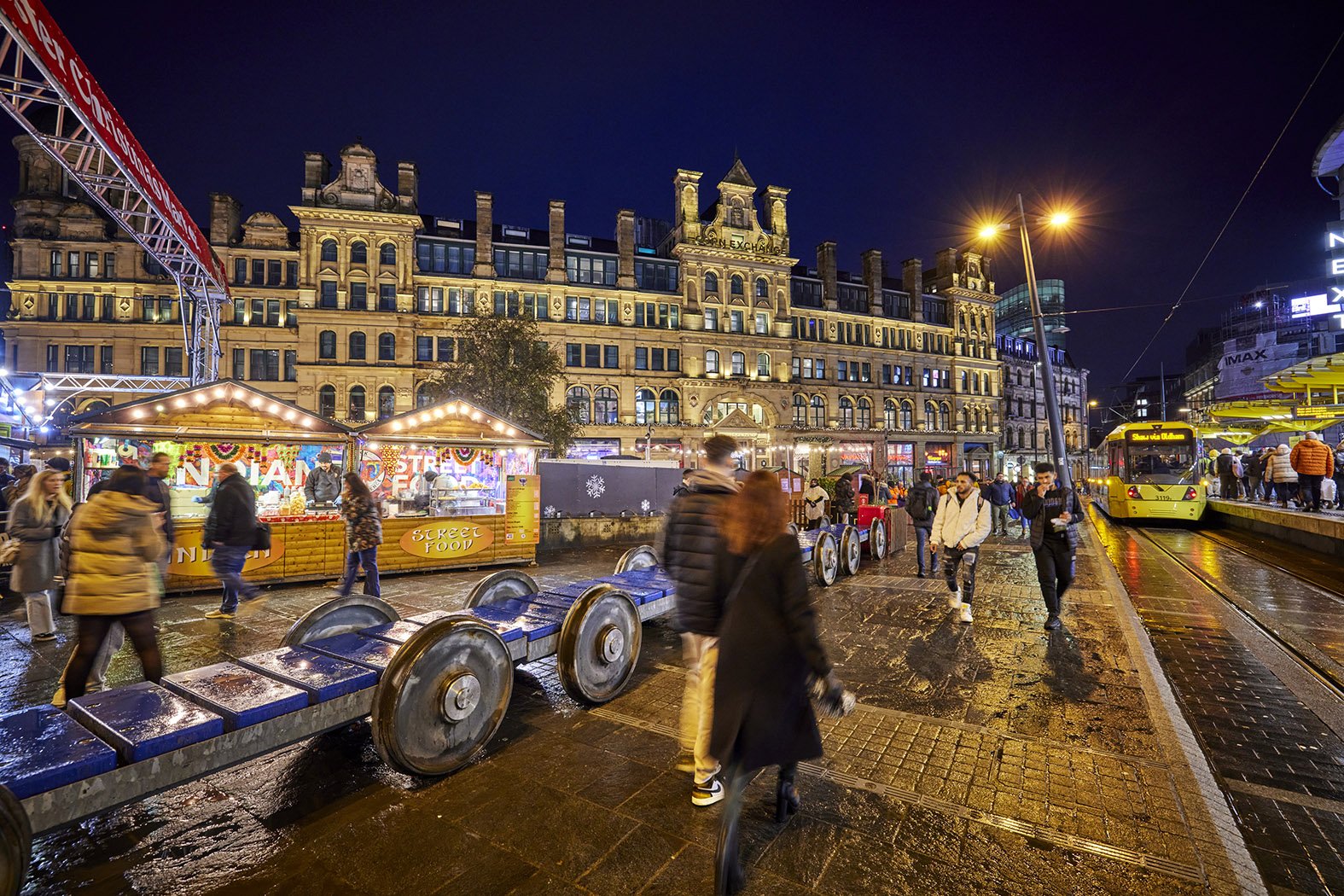Exchange Square
Location Manchester, UK | Client Manchester City Council | Size 1.21 hectares | Status Completed 1999 | Tags Parks and Civic Spaces, Public Realm and Infrastructure
We redesigned a forgotten corner of the city of Manchester, reclaiming it into a bustling plaza beloved by residents and visitors.
Exchange Square, in the heart of Manchester, UK, was the site of an IRA bomb in 1996. We reclaimed the square and turned it into the heart of a vibrant retail and entertainment district.
Since 1999 the new district has catalysed the regeneration of the entire city centre.
“(T)he design took … threads from the history of that part of the city and built them into something modern…. The new Exchange Square is something that is very distinctly about Manchester, I’ve never seen anything like it anywhere else. The whole area is transformed.”
Sir Richard Leese, Manchester City Councillor
Vital to the design of the square is that the plaza extends out to the building edges. Its success, in part, is due to carefully “borrowing” the activity of the surrounding buildings and streets.
Working with the existing topography, we sculpted a plaza level change as the major design factor.
The level change accomplishes three things. It creates places for a great variety of activities, it provides a setting for the surrounding buildings and it makes the square accessible to all. Connecting the two levels is an exuberance of ramps and stairs that become objects of both movement and stasis. These ramps act as landscape-scale furniture, accommodating movement and informal seating.
The upper level is the largest open area of the site, where most retail activity takes place. Inserted into this plane are flush-mounted rail tracks with inset colored glass panels lit from below. The tracks mark the historical importance of railroads in the industrial development of Manchester. In a city that can be dark and overcast for much of the year, the effective use of light is a dramatic addition to the public realm. Cheerful blue moveable benches, made from unused railway parts and train wheels, offer flexible seating for different events.
The lower level is the area of the site that gets the most sunshine. The historic line of Hanging Ditch (originally an ancient fortification ditch, culverted in 1600) is brought to life by an attractive water feature flanked by river birch trees, which give a soft and more casual quality to this area. Originally designed to accommodate outdoor dining, it was flexed to incorporate the tram stop which brings visitors from all over the city to socialise, relax and shop.
“The whole area was dismal, it was a very non-descript part of the city, it was an area that just sort of existed, it didn’t have any character, there was no activity, there was no vibrancy. … (I)t wasn’t a place you would choose to go to …. The area is different now because there is activity at all times during the day. There are millions of people who use that space … if you say to anybody in the city, Exchange Square, people know it.”
Euan Kellie, resident
The square sits at the junction of two significant geological formations— a huge nose of Yorkstone at the Cathedral side of the square and an adjacent bed of granite underneath the shopping center. MSP used Yorkstone and granite to reflect the geology.
2023 images: Mark Waugh Photography




